How to Extract Individual Files from System Image Backup in Windows 10
Q: How to extract individual files from the Windows 10 system image backup?
"Hey, I have created system image backup in my Windows 10 computer. Unfortunately, I lost an important file from my PC. Is there any way to extract or recover just one file? I don't want the whole backup, but just a single file from it. "
With just a few clicks, you can create a system image with Windows Backup and Recovery. This tool is multi-functional, that is an excellent convenience to computer users. By using the same tool, you can also back up your folders, files, and whole partition data as images.
System image backups are useful but should only be used to restore an entire system. Perhaps, you want to restore individual files rather than a whole system. In this case, system image backups will not be useful. What should users do if they would want to backup an individual file?
Despite the System image backups not suitable for backing up individual files, you can still backup a single file. If you are not sure how to extract individual files from a Windows 10 system image backup, below is how to do it. Using the two below methods, you will successfully restore individual files from your Windows 10 backup.
Part 1: Why Do You Need to Extract Individual Files from Windows System Image?
Using the Windows tool, you can back up the Windows system effectively. It is something that every user should do. The reason is, if there is a system malfunction or your computer crashes, you will be on the safe side. Also, there will be no need to reinstall the system. It is possible to save application documents or crucial files on the system.
You can lose data from a computer, and this can be a huge problem. It happens accidentally, but this should not be a problem with this tool. Thus, to restore the data, it must be extracted from the system ISO file. Although this is a solution, you might get an error while doing it. You may see a prompt message stating that extracting individual files from the system ISO file is not possible.
To extract an individual file, you do not need to restore the entire system image backup. It is never necessary and is something that saves you time. So, to extract a specific file, there are two methods that you can use. Below we will have a look at them.
Part 2: How to Extract Individual Files from the System Image Backup in Windows 10?
Do you have to factory reset your computer and restore the whole backup when you need to restore some files? If you are using System Image backup, you do not need to do it. Below are some steps on how to extract individual files from System Image Backup in Windows 10. They should be followed carefully for effective results.
Method 1. Extracting Individual Files with AOMEI Backupper
Firstly, to extract files from Windows backup, there is software that does it with ease. AOMEI Backupper is a useful tool that you can use. This tool is flexible as you do not need to restore the entire system when all you need is specific files. The "Explore Image" feature will help in this case if the System Image Backup is created through AOMEI Backupper.
This tool is essential too when you need to run file backup for some crucial files. It is possible to do so without using another drive. Below are steps on how to extract individual files from Windows 10 System Image backup when using AOMEI Backupper.
Step 1: Download the software
In your first step. You will have to first download and then install the AOMEI Backupper software.
Step 2: Select the explore image option
Now, go to the "Tools" section that you can locate in the "Home" tab. Then, select the option that reads "Explore Image."
Step 3: Choose system backup
To extract files, go ahead and click on the "System backup" task. Once you perform this, press the "next" button.
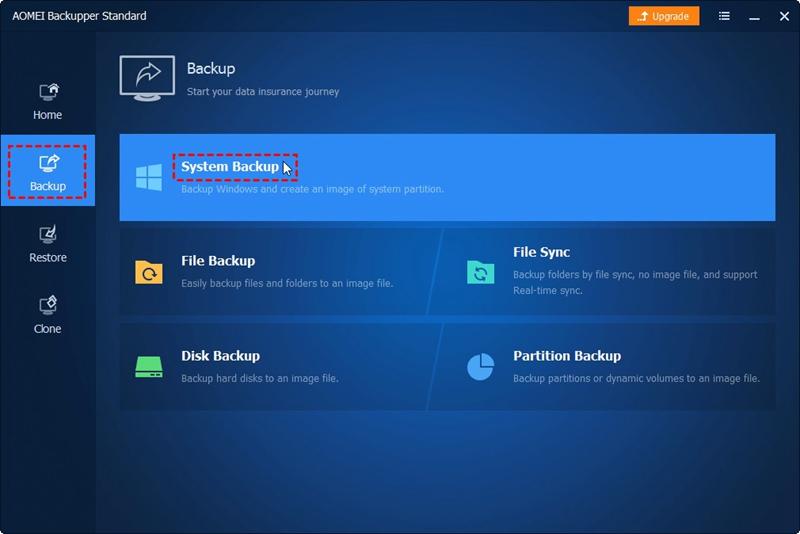
Step 4: Select backup file
Here, you will see the "Backup Point" page. Select a backup file and then "Next" subsequently. Different backup points will be available if you have previously run several backup tasks. Check on the dates and choose one based on this.
Step 5: Assigning the drive letter
It is where you choose the drive that you wish to mount. After choosing, assign the drive letter for it or them if there are several. A good example is assigning a drive letter for the partition as C and then pressing the "Next" button. It will attach the image.
Step 6: Press the finish button
Give the process some time to finish. Once it completes, select the "Finish" option.
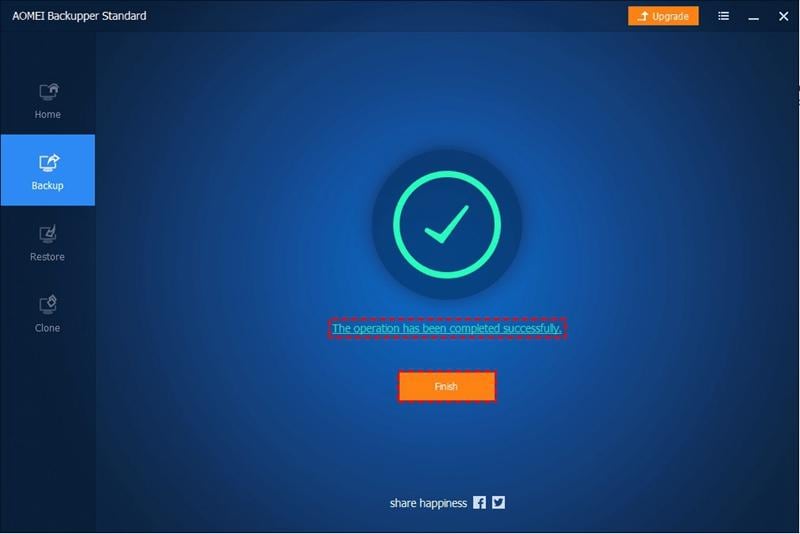
Step 7: Select and copy files
On your backup image, you will need to explore the content. For this, you can select the option "This PC" or the "Windows Explorer" option. On this final step, copy the files that need to be recovered and paste them.
Notes:
- When you boot the computer next time, there will be an automatic removal of the mounted drive. By going to the "Tools" menu, you can remove the mounted drive manually. This section will lead you to the "Detach" screen or "Explore Image" options. Select the "Detach" option.
- Choose how you want to assign the virtual drive except for the existing letter.
Extracting specific files from a system image backup has never been this easy with AOMEI Backupper. Thus, by using this software, there will be no need to restore the entire system image backup. These two tasks will be easy to undertake. Extracting data from ISO file in Windows 10 becomes hassle-free. It only requires simple steps to do it.
Method 2. Extracting Individual Files via Disk Management
Windows prompts that extracting specific files from the backup is not possible. However, it is something that anyone can do. To perform the task without issues, click on the "Disk Management" option.
Now, using the .vhd or .vhdx file extension, system images are stored as a VHD file. Thus, by using Disk Management, you can mount the VHD file as a separate disk. With this simple option, it will be possible to extract specific or individual files. Besides, it also makes it possible to browse the contents of a system image.
If you are looking forward to attaching extract files and Windows Image Backup, below guidelines will be useful. The primary task that needs to be performed here is the creation of the Windows System Image. It is an excellent option when you need to know how to extract individual files from system image backup in Windows 10.
Step 1: The first thing to be done is to select "This PC" and then click on the "Manage" option. A pop-up window shows up, and on the left panel, you can see the "Disk Management" option. Go ahead and click on it.
Step 2: Now, go to the "Action" menu in Computer Management. Here, you should choose the "Attach VHD" option.
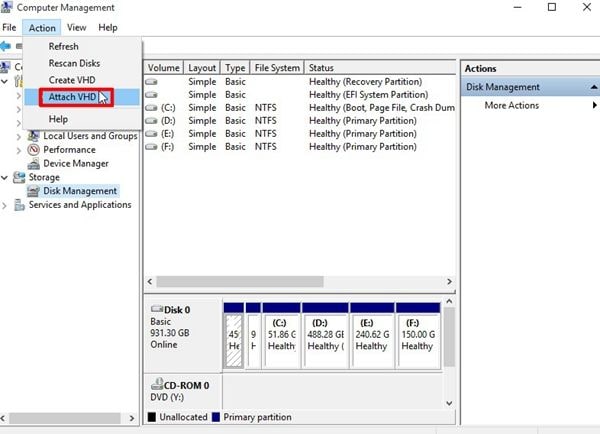
Step 3: To locate the system image backup file, select the "Browse" option. To start attaching VHD, press the "OK" button.
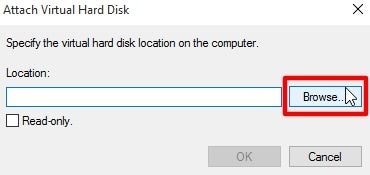
Notes:
- On this destination, it is possible to locate VHD files. What could be the reason? It is because the backup consists of not only C drive but also all system-related partitions. When selecting the VHD file, you should consider the file size.
- You have to be attentive to make sure individual files are extracted. So, to do this, avoid ticking the box before "Read-only" option.
- Before clicking on the "Open" button, select the drive that you want to attach. A new drive will appear which will be the Virtual HDD file.
Step 4: It is important to assign your partitions to the drive letter. It is because it will be impossible to access the partition without a drive letter. Thus, to assign, you have to head over to the "Change Drive Letter and Paths…" option. For that, right-click on the partition, go for the option mentioned above and add a drive letter.
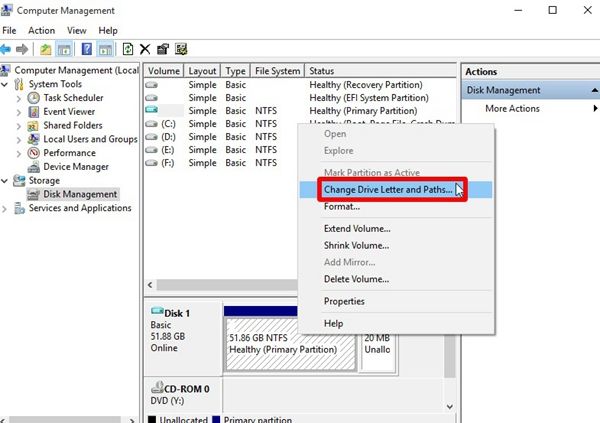
Step 5: For example, assign "M" as the drive letter. To open the File Explorer, proceed to press "Win+E" keys. To locate the files that you want to retrieve, double click on the new drive. Copy them onto a different drive.
Step 6: In the "Disk Management" window, there is a "Disk" that corresponds to the VHD. So, right-click on it and choose the "Detach VHD" option. This move will detach the mounted drive. You should do it when you have copied all the files from the backup.
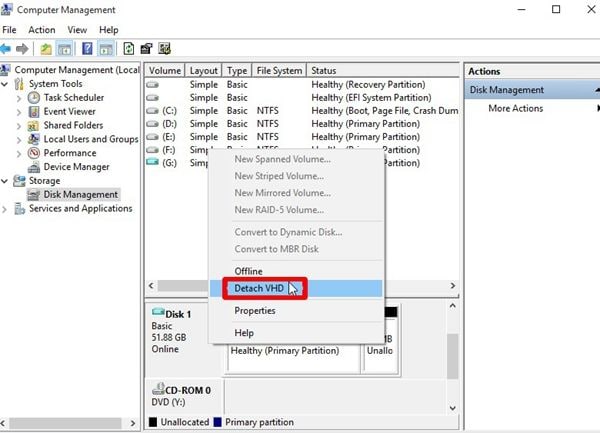
So, you can see how easy it is to extract individual files via Disk Management.
Conclusion
Using Disk Management, you can unpack the Windows backup files. It is when you have to restore specific files from Windows System Image backup. Most users find the use of Disk Management a bit complicated. When checking how to extract individual files from System Image Backup in Windows 10, they prefer the first option.
When you find the second method complicated, you can opt for the first one. The all-in-one backup software allows you to back up more than the operating system. According to the requirements, you can backup individual files, disks, and partitions.
To extract individual files, you can use the Explore image feature. It allows you to mount disk, system, and partition images as virtual drives. Besides, you can also eliminate issues such as system backup and restore, as well as Windows data problems by using this software.
Data Backup Services
- Computer Backup
- Hard Drive Backup
- Mac Backup
- Cloud Backup








 ChatGPT
ChatGPT
 Perplexity
Perplexity
 Google AI Mode
Google AI Mode
 Grok
Grok
























Amy Dennis
staff Editor